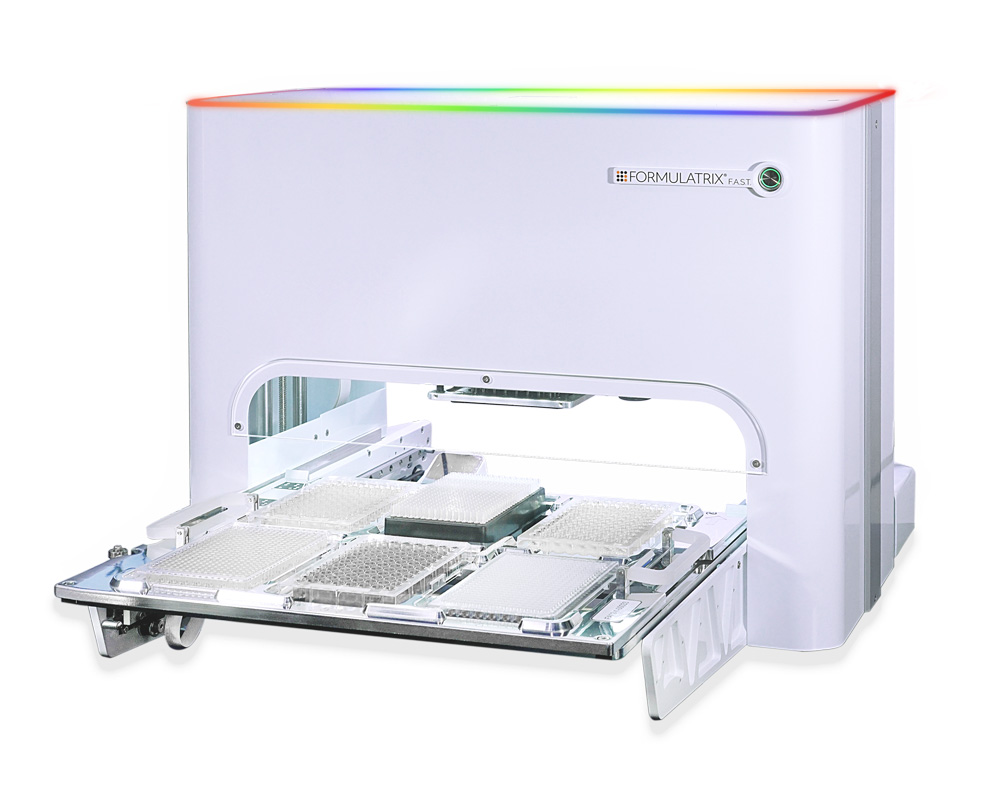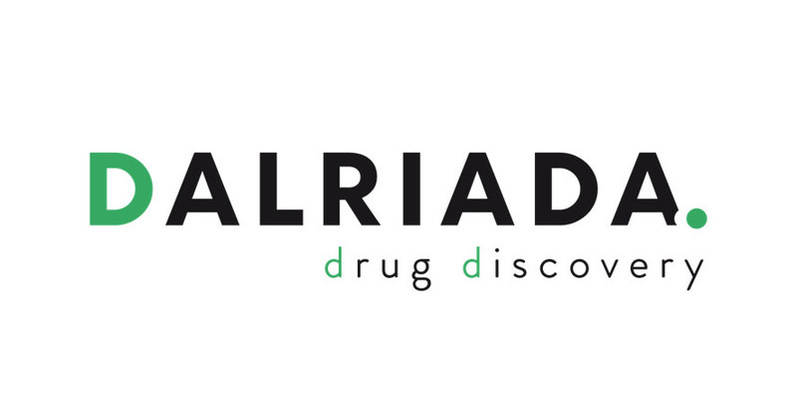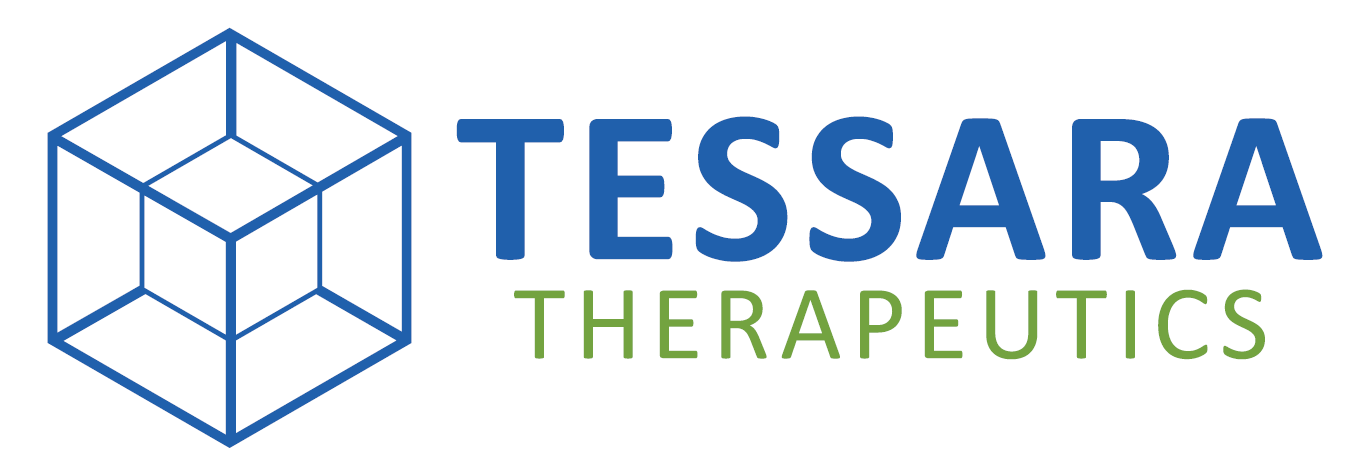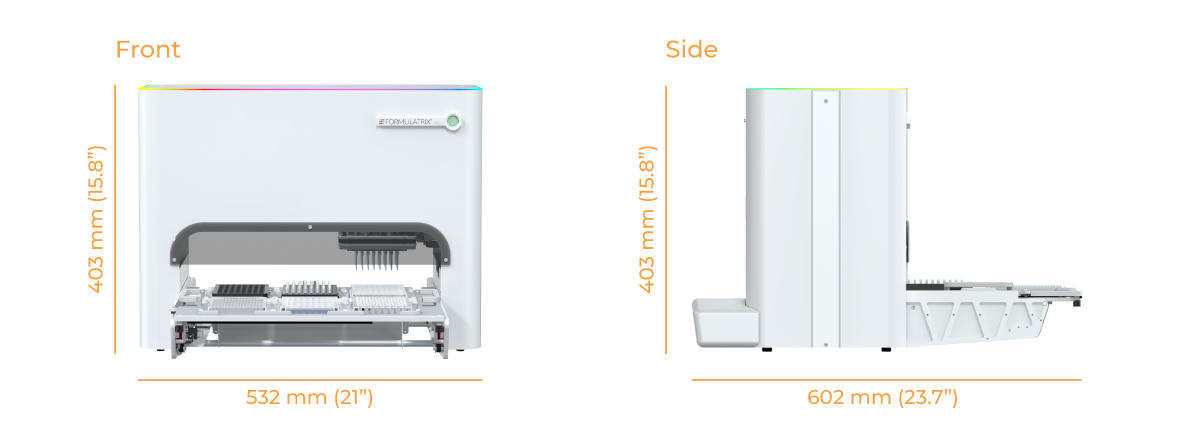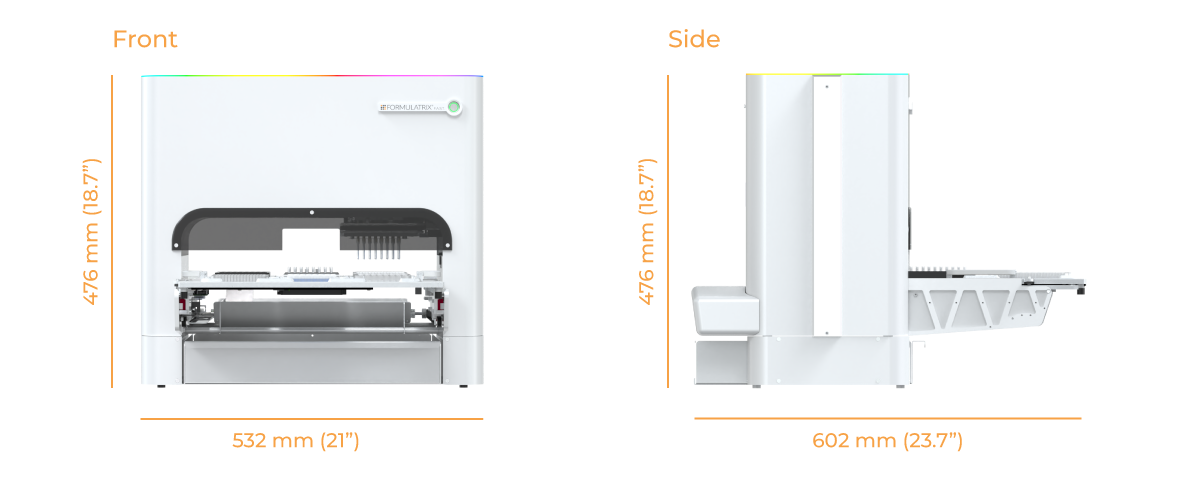What is a Positive Displacement pipette tip?
It is like the way syringes work. There is a solid plunger inside the tip that creates aspiration action (vacuum) and dispense action (pressure). This plunger has no compression and expansion effect on the standard (air displacement) pipette tip. It enables the tip to transfer lower volume in a more precise, more accurate, and virtually agnostic way to differentiate liquid classes of various samples. This makes the protocol work much simpler as managing liquid classes is a tricky step.
What are the minimum and maximum volume ranges of the tip?
The minimum volume is 0.1 µL, while the maximum volume is 13 µL for each transfer. If you want to transfer more volume, the system will automatically do it in multiple phases.
What is the Coefficient of Variation (CV) for 100 nL of buffer/water?
⩽5% with 8 channels (STP Mosquito’s style) and ⩽5% with 96 channels (Agilent Bravo’s style).
What is the accuracy for 100 nL of buffer/water?
⩽10% with 8 channels (STP Mosquito style) and ⩽10% with 96 channels (Agilent Bravo style).
What labwares are supported by the F.A.S.T. instrument?
The F.A.S.T. instrument supports SBS footprint with 9 mm pitch (96 wells) and 4.5 mm pitch (384 wells).
What is the maximum height of the labware that can be supported by the F.A.S.T. instrument?
The maximum labware height is 20 mm.
Does the F.A.S.T. instrument support a deep well (2 µL)?
No, it does not support deep well plates.
Does the system support integration?
Yes, it does. F.A.S.T. is using an API that is exposed to any other integration software.
What is the minimum dead volume?
It depends on the geometry of the well (the conical bottom would have the least dead volume) and the liquid class (DMSO can be a good reference).
The default gap between the tip to the bottom of the well is 1 mm, but users can change that to closer (0 mm which is touching the well bottom) in regard to having lower dead volume.
As a guidance:
- For a typical 384-well microplate with conical bottom, the dead volume of the well is about 10 µL. For more information, please see this link.
- For a typical 96-well microplate with conical bottom, the dead volume of the well is about 30 µL. For more information, please see this link.
Is it possible to transfer the sample liquid from a 96-well plate to a 384-well plate?
Yes, it is. You can transfer liquid from a 96-well plate to a 384-well plate.
Can users create new plate definitions, and how to do it?
Yes, they can. From the Side Menu, select Plate Type Creator and follow the instructions. The F.A.S.T. instrument will automatically measure your plate using a built-in measuring tool in the F.A.S.T. Head. For more information, see Adding Plate Types to the Labware List.
How many labware can be placed on the deck/tray?
The deck can hold 1 tray that consists of 6 tray inserts. Tray insert number 2 is dedicated to the tip caddy or to create a new labware. While tray insert 1, 3, 4, 5, and 6 are for the microplates.
Does the F.A.S.T. instrument have a method or feature to prevent crashes or collisions that might cause damage to the instrument?
There are two methods to prevent crashes or collisions:
- The collision detection feature on the F.A.S.T. Head.
- The motion error detection feature on each motor.
Both features would stop any movements when triggered, to prevent any damage to the system.
What will happen in the event of a major crash or if something is stuck in the instrument?
The system will stop any motor movements. Then, users have to perform a recovery action manually by clicking the Recovery Action button on the Side Menu. The system will be ready in a few seconds.
Being a web-based software, what happens if the internet is down? Is there an offline option to run the system?
The F.A.S.T. is not using the internet to be able to work and it uses a local network. As long as the local network is working, the F.A.S.T. instrument is ready to be used.
What accessories are compatible with the F.A.S.T. deck?
The F.A.S.T. deck is compatible with magnetic racks for 96-well and 384-well microplates and plate adaptors for non-skirt SBS microplates. These accessories are made by FORMULATRIX. Email us at info@formulatrix.com for general products or sales inquiries.
Do users need to change the instrument head or install any adapters to be able to use single, 8, 12, or 96 channels mode? Can it change between all pipetting modes on the fly without any user intervention?
Users don't need to change the head and modify the software configuration. It works back and forth between pipetting channel mode without user intervention. Users only need to create and execute a protocol that includes all of the modes. For a fun and attractive live virtual demo, you can request a virtual demo or email us at sales@formulatrix.com.
How much does it cost for a single pipette tip?
It costs 10 cents per pipette tip.
As stated in the previous Q&A, the dead volume of a 96-well plate with conical bottoms is about 30 µL. Can we improve the value that seems too high?
The dead volume definitely can be improved. Microplates with conical well bottoms are the most efficient. So, we put that volume as a conservative volume because the well bottom shape matters the most.
The dead volume of the F.A.S.T. system is super small, almost reaching 0 µL. We are using positive displacement pipette tips that enable us to get all of the samples out of the tips.
Does the F.A.S.T. instrument support non-skirt and semi-skirt microplates?
Yes, it supports the non-skirt and semi-skirt microplates with plate adaptors that have been validated by the F.A.S.T. engineer.
